Trek Duration For Everest Base Camp Budget Trek
The Everest Base Camp Budget Trek is carefully planned over a 12-day period, which includes your arrival and departure from Kathmandu, Nepal’s vibrant capital city. The main trekking portion begins from the mountain gateway town of Lukla and follows a scenic route through the breathtaking Himalayan landscape, culminating at the iconic Everest Base Camp before retracing your steps back to Lukla. This core trek typically takes around 11 days.
To ensure a safe and comfortable journey, the itinerary incorporates crucial acclimatization days at strategic stops such as Namche Bazaar and Dingboche. These rest days allow your body to adjust gradually to the increasing altitude, significantly reducing the risk of altitude sickness, a common concern when trekking in the high Himalayas.
This balanced schedule is designed to provide a rewarding trekking experience that combines physical challenge with sufficient rest and cultural immersion. You’ll have ample opportunity to soak in awe-inspiring views of snow-capped peaks, experience rich Sherpa culture, and enjoy the pristine natural environment of the Khumbu region all without feeling rushed or overwhelmed.
Maximum Altitude of Everest Base Trek
The Everest Base Camp Budget Trek reaches its highest point at Kalapatthar, which stands at an impressive altitude of approximately 5,545 meters (18,192 feet). Kalapatthar is famed for offering arguably the most breathtaking panoramic views of Mount Everest, the world’s tallest peak, as well as neighboring Himalayan giants such as Lhotse, Nuptse, and Pumori. This vantage point is a must-visit for trekkers seeking unparalleled photo opportunities and a close encounter with the majestic Everest massif.
The iconic Everest Base Camp (EBC) itself is situated slightly lower, at around 5,364 meters (17,598 feet), resting on the vast Khumbu Glacier. Although trekkers do not ascend Everest, standing at EBC offers a surreal experience immersed in a landscape dominated by towering snow-capped peaks, rugged glacial formations, and the vibrant Everest trekking community.
Due to the extreme altitude, this part of the trek requires careful and gradual acclimatization to help your body adjust to the thinner air and lower oxygen levels. Slow ascent, proper hydration, and awareness of altitude sickness symptoms such as headaches, dizziness, and nausea are essential for your safety and well-being. Our itinerary is designed with these considerations in mind, incorporating rest days and acclimatization stops to minimize risks and maximize your trekking enjoyment.
Flight Information (Lukla Access)
During the peak trekking seasons of spring (March to May) and autumn (September to November), flights to Lukla Airport officially known as Tenzing-Hillary Airport often depart from Ramechhap Airport instead of Kathmandu’s domestic terminal. Located approximately 4 to 5 hours by road east of Kathmandu, Ramechhap Airport serves as a strategic alternative to ease the heavy congestion and frequent flight delays commonly experienced at Kathmandu’s Tribhuvan International Airport. This arrangement significantly improves the efficiency of flight operations during the busiest trekking periods and minimizes the risk of cancellations caused by weather or air traffic.
For trekkers traveling in the off-season or outside peak times, direct flights from Kathmandu to Lukla are still available, providing flexibility depending on your itinerary and travel plans. Our comprehensive trek package includes private vehicle transfers to and from Ramechhap Airport, guaranteeing a timely and comfortable journey to catch your Lukla flight. This seamless connection ensures your adventure starts smoothly, allowing you to focus on the exciting trek ahead without worrying about logistics.
Flying into Lukla is considered one of the most spectacular mountain flight experiences in the world. The short 30- to 40-minute flight offers breathtaking panoramic views of the Himalayan peaks, including stunning vistas of Mount Everest, Lhotse, and Ama Dablam. However, due to Lukla’s high altitude (2,860 meters) and its notoriously short, sloped runway surrounded by towering mountains, the airport is subject to challenging weather conditions such as sudden fog, strong winds, and turbulence. These factors can cause unpredictable flight schedules, including delays and occasional cancellations, especially during monsoon and winter seasons.
Therefore, flexibility in your travel itinerary is essential. We recommend building in buffer days before and after your Lukla flight to accommodate any unforeseen changes. Your experienced trekking guide and logistics team will assist you in managing these situations to keep your trek on track.
Best Time to Trek EBC
The best seasons to undertake the Everest Base Camp Budget Trek are spring (March to May) and autumn (September to November), when the Himalayan weather is at its most favorable. These periods are widely regarded as the ideal trekking windows due to stable weather conditions, clear skies, and excellent mountain visibility, allowing trekkers to fully enjoy spectacular panoramic views of iconic peaks such as Mount Everest, Lhotse, and Ama Dablam.
During the spring season, the valleys and hillsides come alive with vibrant rhododendron blooms, painting the trails in hues of red and pink. Temperatures are generally moderate, making hiking comfortable, and the days are longer, giving trekkers more daylight hours to explore. Wildlife is also more active during this time, offering additional natural beauty and photo opportunities. Spring is an especially popular season for nature lovers and photographers seeking to capture the Himalayan flora and fauna in full bloom.
In contrast, autumn is characterized by cool, crisp air and minimal rainfall, producing some of the clearest mountain views of the year. The skies are usually free of haze, creating perfect conditions for trekking and breathtaking landscape photography. Autumn is also the post-monsoon season, meaning the trails are lush and the rivers are full, but the weather remains dry and pleasant. The cultural festivals in the region often take place during autumn, allowing trekkers to experience authentic Sherpa traditions and celebrations.
The monsoon season (June to August), while bringing lush greenery, is generally not recommended for trekking due to frequent heavy rains, slippery trails, increased risk of landslides, and poor visibility caused by dense clouds and fog. These conditions can make trekking hazardous and diminish the overall experience.
Winter (December to February) brings cold temperatures and snowfall, especially at altitudes above 4,000 meters, which can result in icy and challenging trail conditions. However, trekking in winter offers a quiet and solitary experience on the trail with fewer crowds. For well-prepared and experienced trekkers equipped with proper cold-weather gear, winter trekking can be uniquely rewarding, showcasing snow-capped peaks under bright blue skies.
Overall, choosing the right season for your Everest Base Camp trek is essential for maximizing safety, comfort, and enjoyment, and spring and autumn remain the top recommendations for most trekkers.
Trek Difficulty Level During the Everest Base Camp Budget Trek
The Everest Base Camp Budget Trek is widely classified as moderate to challenging, making it suitable for individuals with a reasonable level of fitness and endurance. This trek demands consistent walking of approximately 5 to 7 hours daily across diverse and often rugged mountain terrain, which can test your stamina and resilience. The trail features a mix of steep ascents, uneven rocky paths, narrow suspension bridges swaying over deep gorges, and occasionally snow-covered sections, especially during late autumn, winter, or early spring seasons.
Although the trek does not require any specialized technical climbing skills or mountaineering experience, the significant reduction in oxygen at higher altitudes adds an extra layer of physical challenge. The thinner air means that simple tasks such as walking or climbing steep slopes can feel more strenuous, emphasizing the importance of cardiovascular fitness, strength training, and good overall health prior to embarking on the trek.
Preparation is key: consistent training that includes aerobic exercises like hiking, running, or cycling will greatly enhance your ability to handle the physical demands. Additionally, maintaining a positive mental attitude, pacing yourself appropriately, and listening to your body are crucial for successfully completing the journey without injury or altitude sickness.
Trekking with the support of experienced Sherpa guides who are familiar with the trail conditions and equipped to manage emergencies adds a vital safety net. Proper trekking gear such as sturdy boots, trekking poles, and layered clothing will also help you navigate the varying weather and terrain comfortably. Even for first-time trekkers, with adequate preparation and the right mindset, conquering the iconic Everest Base Camp trail is an achievable and deeply rewarding adventure.
Accommodation Type During the Everest Base Camp Budget Trek
During the Everest Base Camp Budget Trek, accommodation is provided in traditional Himalayan teahouses, which are locally owned lodges offering a combination of basic comfort and authentic Sherpa hospitality. These teahouses, scattered throughout villages like Lukla, Namche Bazaar, Tengboche, Dingboche, and Gorakshep, provide essential shelter and warmth for trekkers in the remote mountain environment.
Rooms are typically simple, twin-sharing setups with wooden beds, foam mattresses, pillows, and thick blankets to keep you warm during chilly nights. While the rooms may be unheated and lack luxury amenities, they offer a cozy, rustic atmosphere that complements the raw beauty of the Himalayan setting. Private rooms may be available in lower-altitude villages, but at higher elevations, space is limited, and shared rooms are more common.
Bathroom facilities vary by location. In lower-altitude areas such as Phakding and Namche Bazaar, you may find Western-style flush toilets and private bathrooms in some lodges. However, as you ascend above 4,000 meters, expect basic shared toilets, often squat-style, and limited access to running water due to freezing conditions. Some teahouses offer hot showers, usually powered by gas or solar heating, available at an extra charge (NPR 300–600) per use.
Heating is generally available only in the common dining halls, where yak-dung stoves or kerosene heaters are lit in the evenings. These heated rooms become social gathering spots, allowing trekkers from around the world to share stories, enjoy meals, and unwind after a long day on the trail. Electricity is available in most teahouses, though charging devices often incurs a small fee (NPR 200–400 per hour).
Many teahouses in popular villages like Namche Bazaar, Dingboche, and Lobuche now offer Wi-Fi connectivity, often via Everest Link cards, available for purchase on-site. While the connection can be slow and unreliable at higher altitudes, it provides a useful way to stay in touch with loved ones or update your social media during the trek.
Staying in teahouses is not just about having a place to sleep—it’s a chance to immerse yourself in local Sherpa culture, engage with your fellow trekkers, and experience the warm resilience of communities living in one of the most awe-inspiring places on Earth.
Meals Included
During the Everest Base Camp Budget Trek, your daily nutritional needs are well taken care of with three freshly prepared meals breakfast, lunch, and dinner included throughout the trekking days. These meals are served at local teahouses along the trail and are specially designed to provide the energy, warmth, and hydration required for high-altitude trekking in the Himalayas.
You’ll enjoy a variety of traditional Nepali and Tibetan dishes, all made with locally sourced ingredients that are simple yet nourishing. A staple of the trek is Dal Bhat, a hearty and balanced meal of steamed rice, lentil soup, seasonal vegetables, and sometimes a portion of curried potatoes or spinach. It’s not only delicious but also unlimited in most teahouses making it the perfect fuel for long trekking days.
Other commonly available meals include:
Tibetan bread (balep) or chapatis with jam, honey, or eggs
Vegetable or egg noodle soups for light and warm lunch options
Momos (Nepalese dumplings) stuffed with vegetables, cheese, or meat
Fried rice, thukpa (noodle soup), and pasta dishes
Boiled eggs, porridge, cornflakes with milk, and pancakes for breakfast
To stay hydrated and warm in the mountain cold, a wide selection of hot beverages is available, such as milk tea, black tea, ginger lemon honey, instant coffee, and hot chocolate. Some teahouses also offer garlic soup, known locally for helping prevent altitude sickness.
Vegetarian and vegan-friendly options are readily available along the trail, and most teahouses maintain acceptable hygiene standards, especially in higher-traffic areas like Namche Bazaar and Dingboche. However, since all ingredients must be carried up by porters or yaks, you’ll find limited access to fresh meat, and non-vegetarian meals may not always be available or recommended due to preservation concerns at high altitude.
Meals during your stay in Kathmandu are not included in the budget trek package, except for breakfast at your hotel, allowing you the freedom to explore the city's vibrant food scene. From traditional Newari cuisine to modern Nepali fusion and international flavors, Kathmandu has a wide array of dining options to suit all tastes and budgets.
Overall, food on the Everest Base Camp trek is more than just sustenance; it's a daily comfort, a cultural experience, and a vital part of maintaining your health, stamina, and morale in the high Himalayas.
Guide and Porter Support
One of the most essential elements of a successful Everest Base Camp Budget Trek is the support provided by a professional trekking guide and porter team, both of whom play a vital role in ensuring your journey is safe, enjoyable, and stress-free.
You will be accompanied by a licensed, experienced, English-speaking trekking guide who is well-versed in Himalayan geography, culture, and high-altitude safety protocols. Your guide is not just a navigator but also your local expert and cultural ambassador, offering fascinating insights into the Sherpa way of life, Buddhist traditions, and the natural environment of the Khumbu region. They are trained in first aid, altitude sickness recognition, and emergency response, ensuring your safety remains a top priority throughout the trek.
In addition to the guide, porter support is included in your trek package to ease the physical burden of carrying your gear. The standard arrangement is one porter for every two trekkers, and each porter will carry up to 20–24 kilograms, which means your personal baggage allowance is limited to 10–12 kg. This enables you to walk with just a light daypack, containing essentials like a water bottle, snacks, camera, sunscreen, gloves, and a windbreaker making your daily trekking much more manageable and enjoyable.
Our Sherpa porters and support staff are drawn from local mountain communities and possess an intimate knowledge of the Everest trekking trails, weather patterns, and high-altitude terrain. These hardworking individuals are the backbone of Himalayan trekking and are treated ethically, with fair wages, proper equipment, and adequate food and lodging during the journey. We follow Porter Welfare Guidelines to ensure their well-being and safety at all stages of the trek.
The presence of this expert team not only enhances your physical comfort but also gives you peace of mind, knowing that every logistical detail from teahouse reservations and meal orders to route adjustments in case of weather changes is taken care of. Should you face any issues such as altitude sickness, fatigue, or equipment problems, your guide will be ready with solutions or medical support, and if needed, assist in coordinating helicopter evacuation or descent.
Choosing a trek with dedicated guide and porter support is especially beneficial for first-time trekkers or those unfamiliar with the high-altitude Himalayan environment. Their local knowledge, emotional encouragement, and practical assistance greatly increase your chances of reaching Everest Base Camp (5,364m) and Kalapatthar (5,545m) successfully.
Trekking Permits
To legally trek in the Everest Region, including the route to Everest Base Camp (EBC), all trekkers must obtain two essential trekking permits: the Sagarmatha National Park Entry Permit and the Khumbu Pasang Lhamu Rural Municipality Permit. These permits are mandatory and enforced by local authorities at various checkpoints along the trail, ensuring all travelers comply with regional regulations.
1. Sagarmatha National Park Permit
This permit grants you entry into Sagarmatha National Park, a UNESCO World Heritage Site and one of the most ecologically diverse protected areas in Nepal. It covers stunning Himalayan terrain, including forests, rivers, glaciers, and iconic peaks like Mount Everest (8,848.86m), Ama Dablam, and Lhotse. The permit fee is NPR 3,000 per person for foreign nationals, which directly supports conservation efforts, biodiversity protection, and park maintenance.
2. Khumbu Pasang Lhamu Rural Municipality Permit
This local permit, also costing NPR 3,000 per person, is collected by the local government in the Khumbu region. It replaced the previously used TIMS (Trekkers' Information Management System) card for the Everest region. The funds from this permit contribute to community development, infrastructure improvements, waste management, and emergency services in the high-altitude villages like Namche Bazaar, Tengboche, Dingboche, and Lobuche.
Permit Checks & Validity
Both permits are typically checked at Monjo, the entrance to Sagarmatha National Park, and in Namche Bazaar or other trail checkpoints. Trekkers are required to carry printed copies of their permits at all times during the trek. Failing to present valid permits can result in penalties or being denied access to certain areas.
Permit Processing by Our Agency
As part of our Everest Base Camp Budget Trek package, our experienced team handles the entire permit process on your behalf, including application submission, fee payment, and document preparation. This means you won’t have to stand in line at permit offices or worry about last-minute documentation. Everything will be ready before your departure from Kathmandu to Lukla.
Important Notes for Trekkers
You do not need a TIMS card for the Everest region.
Passport-sized photos are generally not required for these permits, but it’s always good to carry a few extras.
Ensure that your passport is valid and with you during the trek, as it may be cross-verified during checks.
All permit fees are non-refundable, even if the trek is shortened or canceled due to weather or personal reasons.
By obtaining these Everest trekking permits, you are not only ensuring legal compliance but also contributing directly to sustainable tourism, conservation, and the economic well-being of mountain communities. It’s a small but meaningful way to give back to the region that offers so much.
Wi-Fi, Electricity & Charging on the Everest Base Camp Trek
While trekking through the remote Himalayan region, staying connected and keeping your electronic devices charged can be challenging but not impossible. During the Everest Base Camp Budget Trek, basic Wi-Fi and charging facilities are available at most teahouses and lodges along the route, especially in more established villages like Namche Bazaar, Tengboche, Dingboche, Lobuche, and Lukla.
Wi-Fi Access in the Himalayas
Wi-Fi connectivity is typically provided through local services such as Everest Link or AirLink, which require prepaid cards or vouchers. Prices vary depending on altitude and location, with access usually costing between NPR 500 to NPR 1,000 per session or data card, which gives you limited bandwidth (usually around 100 MB to 1 GB).
In lower-altitude areas like Lukla and Namche Bazaar, the connection is generally reliable enough for basic browsing, messaging, or even video calling. However, as you ascend above 4,000 meters, connectivity becomes weaker and slower, so it's best used for essentials like sending location updates, emails, or staying in touch with family.
Electricity and Charging Fees
Electricity is generated primarily through solar panels or small hydropower stations in the Everest region. Most teahouses offer charging services for phones, cameras, headlamps, GPS devices, and power banks, but these services are not included in the room price and usually cost between NPR 200–400 per hour or per device.
At higher altitudes, where electricity is scarce, prices may rise, and charging slots are limited, so it’s wise to charge your gear whenever possible. Some places also restrict charging to communal areas during specific hours, especially in villages like Gorak Shep and Lobuche, where power is limited.
Tips for Staying Powered During the Trek
Carry a high-capacity power bank (minimum 10,000–20,000mAh) to keep your phone or GPS running for several days.
Use a solar charger or solar power bank, especially if you're trekking during sunny months (March–May and September–November).
Keep electronics warm, as batteries tend to drain faster in cold temperatures—store them in your sleeping bag or close to your body at night.
Turn off mobile data, GPS, and background apps when not in use to conserve battery life.
Bring extra batteries for your headlamp, camera, or other devices that don’t use USB charging.
Mobile Network Coverage & Local SIM Cards
If you prefer to use your mobile network over Wi-Fi, consider purchasing a Nepal Telecom (NTC) or Ncell SIM card in Kathmandu before starting your trek. These SIMs offer data packages and 4G coverage in select lower-altitude regions such as Lukla and Namche Bazaar. NTC tends to have better coverage in the Everest region compared to Ncell.
However, be aware that mobile signals are limited or non-existent above Dingboche, so it's not a substitute for proper communication tools like satellite phones or radios in emergency situations.
Though you're trekking in a remote and rugged part of the world, Wi-Fi, charging, and communication options are available just expect to pay extra and plan accordingly. Bring power backups, manage your battery consumption smartly, and purchase local data SIMs for reliable access in lower areas. These steps will help ensure that you stay connected, capture memories, and remain reachable during your Everest Base Camp adventure.
Travel Insurance (Mandatory for Everest Base Camp Trek)
Obtaining comprehensive travel insurance is non-negotiable when embarking on the Everest Base Camp trek, especially given the remote and high-altitude environment in which you’ll be trekking. It is a mandatory requirement for all trekkers, and you will be asked to provide proof of your insurance policy before the start of the trek.
High-Altitude Coverage (Up to 6,000 Meters)
Not all travel insurance policies cover high-altitude trekking, so it’s crucial to choose a policy that explicitly includes coverage for trekking up to at least 6,000 meters. Everest Base Camp stands at 5,364 meters, and Kala Patthar, a common vantage point included in the trek, reaches up to 5,545 meters. Coverage must extend to this elevation level to be valid for the trek.
Emergency Helicopter Evacuation
One of the most essential components of your insurance is emergency evacuation by helicopter, which is often the only viable option in the event of severe acute mountain sickness (AMS), altitude-related illnesses, or physical injuries in the remote Khumbu region. Helicopter rescues in Nepal are extremely expensive, typically costing anywhere from USD 4,000 to USD 10,000 or more. Without insurance, this cost must be paid out-of-pocket upfront—something that can pose a massive financial burden in a crisis.
Medical, Trip Cancellation & Delay Coverage
In addition to altitude and evacuation coverage, your travel insurance policy should include:
Overseas medical treatment
Hospitalization and medication expenses
Trip cancellation and interruption
Flight delays or missed connections
Lost, stolen, or delayed baggage
Repatriation of remains (in extreme emergencies)
These coverages protect you not just during the trek, but also before and after, especially in the case of weather-related flight delays from Lukla or unexpected illness.
Policy Proof & Provider Suggestions
Before beginning your journey, you’ll need to submit a copy of your travel insurance certificate and policy details to your trekking agency. Some reputable travel insurance providers known to cover high-altitude trekking include:
Always read the fine print to ensure your chosen plan covers trekking in Nepal up to 6,000 meters without exclusions.
Why It Matters
The Everest Base Camp region is remote and logistically challenging, and in emergencies, time is of the essence. Having the right travel insurance allows guides and rescue teams to initiate evacuation immediately without worrying about payment verification. It not only protects your health and finances but also provides peace of mind throughout your journey.
Travel insurance is a mandatory safety net for every Everest Base Camp trekker. Ensure your policy includes high-altitude trekking, helicopter evacuation, medical care, and trip disruptions. A well-chosen insurance plan will safeguard your adventure, minimize risks, and allow you to fully enjoy the majestic beauty of the Himalayas without fear of unexpected setbacks.
Altitude Sickness Awareness – Stay Safe at High Altitudes on the Everest Base Camp Trek
When trekking to Everest Base Camp (EBC) which reaches an altitude of 5,364 meters, with nearby Kala Patthar peaking at 5,545 meters you’ll be venturing into extreme altitude zones, where oxygen levels drop significantly compared to sea level. One of the most critical health risks at this elevation is Altitude Sickness, also known as Acute Mountain Sickness (AMS).
What is Acute Mountain Sickness (AMS)?
AMS is the body’s reaction to lower oxygen availability at high elevations. It can affect anyone, regardless of age, gender, or fitness level, and usually begins to show symptoms above 2,500 meters. The Everest Base Camp trek takes you well beyond that, so awareness and prevention are absolutely essential.
Common Symptoms of AMS Include:
Persistent headache (not relieved by normal painkillers)
Dizziness or lightheadedness
Nausea or vomiting
Fatigue and loss of appetite
Shortness of breath, especially during rest
Disturbed sleep or insomnia
Swelling of hands, face, or feet
If ignored, AMS can progress to more dangerous conditions like High Altitude Pulmonary Edema (HAPE) or High Altitude Cerebral Edema (HACE) both of which are life-threatening and require immediate descent and evacuation.
How We Minimize the Risk
Our Everest Base Camp Budget Trek itinerary is specifically designed to include acclimatization days at critical points namely Namche Bazaar (3,440m) and Dingboche (4,410m). These rest days allow your body to gradually adjust to thinner air, reducing the chances of altitude-related illness.
In addition to strategic rest days, we ensure a slow and steady pace throughout the trek, following the golden rule of high-altitude trekking: “Climb high, sleep low.”
Proven AMS Prevention Tips:
Ascend slowly and never rush to gain altitude
Drink 3–4 liters of water per day to stay hydrated
Avoid alcohol, tobacco, and sleeping pills during the trek
Eat a nutritious, high-calorie diet to fuel your body
Protect yourself from the cold to avoid illness that can mimic or worsen AMS
Rest when needed and listen to your body
Medication: Is Diamox (Acetazolamide) Recommended?
Some trekkers choose to take Diamox (a prescription drug that helps prevent AMS by stimulating breathing and speeding up acclimatization). While effective for many, it should only be taken after consulting your physician, especially if you have pre-existing medical conditions. Diamox is not a cure but can be used as a preventative aid when paired with proper altitude practices.
What If You Get Sick?
If you start experiencing symptoms of altitude sickness:
Immediately inform your trekking guide
Do not ascend any higher until symptoms resolve
Rest, hydrate, and monitor symptoms closely
In severe cases, descend immediately, even at night, if necessary
Portable oxygen cylinders and oximeters may be available through your trekking team
Emergency evacuation via helicopter will be arranged if needed (which is why travel insurance is vital)
Key Takeaway: Awareness = Safety
Altitude sickness is a real and potentially serious risk, but with the right knowledge, preventive strategies, and support, it is manageable. By understanding the symptoms, respecting your body’s limits, and relying on the expert guidance of our experienced team, you’ll give yourself the best chance to safely and successfully reach Everest Base Camp.
Budget Trekking Tips – Save Smart, Trek Smarter on Everest Base Camp Budget Trek
Successfully completing the Everest Base Camp Budget Trek doesn’t require spending a fortune but it does require smart planning and budgeting. Here are some practical, money-saving tips to help you stay on budget while still enjoying a safe, comfortable, and memorable trek through the Himalayas.
Cash is King – Carry Enough Nepali Rupees
While trekking in the Everest region, you’ll find ATMs only in Kathmandu and Namche Bazaar (3,440m). Beyond Namche, there are no cash withdrawal options, and all purchases from Wi-Fi to snacks must be paid in Nepali rupees (NPR). It’s strongly advised to withdraw sufficient cash in Kathmandu before you fly to Lukla. Estimate your daily expenses (around NPR 2,000–3,000 per day) for charging devices, hot showers, internet access, snacks, and porter/guide tips.
Stay Hydrated and Eco-Friendly
Bottled water gets increasingly expensive as you climb higher up to NPR 400–500 per liter at higher altitudes. To save money and reduce plastic waste, bring:
A reusable water bottle or hydration bladder
Water purification tablets (e.g., iodine or chlorine dioxide)
A portable water filter or UV sterilizer (like SteriPEN)
Trekkers are highly encouraged to support eco-friendly trekking by avoiding single-use plastics and staying hydrated safely.
Pack Your Own Snacks and Energy Boosters
High-energy trail snacks like granola bars, nuts, chocolates, protein bars, and electrolyte packets are essential for keeping your energy up during long trekking days. These items are either unavailable or extremely expensive in the mountains, so it’s best to buy and pack them in Kathmandu before the trek begins.
Rent Gear Instead of Buying New
Purchasing brand-new trekking equipment for a one-time trip can be costly and unnecessary. Kathmandu offers dozens of reputable gear rental shops where you can rent high-quality equipment such as:
Renting is budget-friendly, environmentally sustainable, and ensures you’re equipped with reliable, tested gear.
Pack Smart and Travel Light
Your trek includes porter support, with each porter carrying the gear of two trekkers (usually up to 20–24 kg total, or 10–12 kg per person). To make their job easier and optimize your own experience, pack:
Only essential clothing layers (no unnecessary extras)
Lightweight, moisture-wicking items
Multi-purpose gear (e.g., a buff can be a scarf, headband, or dust mask)
A small daypack (for water, snacks, rain gear, and valuables)
Overpacking will make your trek harder and slow you down—quality always beats quantity in the Himalayas.
Trekking Gear Requirements – What to Pack for the Everest Base Camp Budget Trek
To successfully complete the Everest Base Camp Budget Trek, having the right trekking gear is absolutely essential. Weather conditions in the Khumbu region can be extremely unpredictable, ranging from sunny days to sub-zero nights, snowstorms, and high winds. Your gear must help you stay warm, dry, safe, and comfortable across varying terrains and altitudes especially as you ascend above 5,000 meters.
Clothing Essentials – Layering is Key
The ability to layer your clothing is critical to managing body temperature and staying dry. Here’s what you’ll need:
Down Jacket (insulated, preferably goose-down): Should be rated for extreme cold, especially for early mornings and nights at high altitude.
Thermal Base Layers (top and bottom): Moisture-wicking and insulating to retain body heat.
Fleece or Softshell Jacket: Lightweight mid-layer for warmth.
Waterproof & Windproof Outer Shell (jacket and pants): Must-have for protection against wind, rain, and snow.
Trekking Pants (convertible or quick-dry): Lightweight and comfortable for long hikes.
Insulated Gloves (inner and outer): To prevent frostbite in high-altitude cold.
Woolen or Synthetic Socks: Several pairs; essential for warmth and blister prevention.
Sun Hat or Cap: For sun protection at lower altitudes.
Warm Beanie or Balaclava: For chilly mornings and evenings.
Footwear – Protect Your Feet
Your feet will carry you every step of the way invest wisely in:
Sturdy, Waterproof Trekking Boots (broken-in): High-ankle support and good grip are crucial for uneven, icy trails.
Camp Sandals or Slip-ons: For use around teahouses after trekking.
Accessories and Technical Gear
These items are equally important for safety and convenience:
Sleeping Bag (rated to -10°C or lower): Teahouses can be extremely cold at night; you’ll need proper insulation.
Headlamp with Extra Batteries: For early morning hikes and teahouse power outages.
Trekking Poles (adjustable): Reduce impact on knees during descents and provide stability on rocky paths.
UV-Protected Sunglasses: Must block 100% UVA/UVB to avoid snow blindness.
Rain Poncho or Lightweight Rain Jacket: Sudden rain is common in the mountains.
Sunscreen (SPF 30+), Lip Balm, and Moisturizer: The sun is stronger at high altitudes, and the wind can dry your skin.
Water Bottles or Hydration Bladder (2L+): Staying hydrated is critical.
Water Purification Tablets or Filter: To safely drink tap or stream water along the trail.
Quick-Dry Towel & Toiletries: For use at teahouses and hygiene on the trail.
Personal First-Aid Kit & Medication
Your guide will carry a group first-aid kit, but you should pack your own personal medical supplies, including:
Diamox (for altitude sickness, consult your doctor first)
Pain relievers (e.g., ibuprofen, paracetamol)
Band-aids and blister pads
Antiseptic cream
Prescribed medications (with spares)
Anti-diarrheal tablets
Backpacks and Luggage
Duffel Bag (provided or available for rent): Carried by porters; should be durable and weather-resistant.
Daypack (25–35L): You’ll carry this daily with essentials like water, snacks, camera, jacket, and documents.
Rain Cover for Backpack: A must during unexpected downpours.
Gear Rental or Purchase in Kathmandu
Almost all necessary trekking gear can be rented or purchased affordably in Kathmandu, especially in the Thamel area. This is a great option for budget travelers who don’t wish to invest in expensive gear for a one-time trek.
Our team provides a complete gear checklist upon booking your trek, so you don’t miss any essentials. You’ll also receive recommendations on where to buy or rent quality, affordable trekking equipment in Kathmandu.
Final Advice: Pack Smart, Trek Smart
Packing wisely for the Everest Base Camp Budget Trek is just as important as physical preparation. Focus on lightweight, weather-resistant, and functional gear. Overpacking adds unnecessary strain, remember, your porter has a weight limit (usually 10–12 kg per trekker). Prepare in advance, test your boots and equipment beforehand, and you’ll be set for one of the greatest adventures of your life.
Why Book the Budget Everest Base Camp Trek?
The Budget Everest Base Camp Trek is the perfect blend of affordability, safety, and adventure designed for trekkers who want to experience the majesty of Mount Everest without the hefty price tag. Whether you're a student traveler, solo adventurer, or budget-conscious explorer, this package offers everything you need to complete the legendary journey to Everest Base Camp (5,364m) while maintaining high standards of safety, service, and cultural immersion.
Affordable Without Compromise
This trek is crafted to offer a cost-effective alternative to luxury trekking packages without cutting corners on what truly matters. You’ll get:
Professional licensed guides and porters
Comfortable teahouse accommodation
All essential trekking permits
Three daily nutritious meals on the trail
Seamless domestic flights and transfers
Full support and logistics from a reputable local agency
By focusing on the essentials and cutting out unnecessary luxuries, you’re still able to fully experience the breathtaking beauty of the Khumbu region all at a fraction of the typical cost.
Experience the Heart of the Himalayas
The route takes you through the most iconic locations in Nepal:
Namche Bazaar – the vibrant Sherpa capital
Tengboche Monastery – a spiritual hub with Everest views
Dingboche & Lobuche – picturesque high-altitude villages
Everest Base Camp & Kala Patthar – unmatched panoramas of the world's highest peaks
You'll walk among towering giants like Everest, Lhotse, Ama Dablam, and Nuptse, cross swinging suspension bridges, and tread ancient trails carved into the rugged Himalayas.
Rich Cultural and Spiritual Experience
Beyond the mountains, this trek offers deep cultural encounters with the Sherpa people renowned for their resilience, humility, and hospitality. Visit ancient Buddhist monasteries, spin prayer wheels, and observe sacred mani stones carved with prayers along the trail. The opportunity to immerse yourself in this unique mountain lifestyle and Buddhist tradition is a highlight that stays with trekkers long after the trek is over.
Safety-First Trekking
Even on a budget, safety remains the top priority. The trek includes:
A well-paced itinerary with acclimatization days
Knowledgeable English-speaking guides trained in altitude awareness
Supportive porter-to-trekker ratios
Constant monitoring of health and weather conditions
Emergency support with helicopter evacuation coordination (insurance required)
You are never alone on the trail. Our experienced staff ensure you stay on the right track, both literally and physically.
Eco-Friendly and Sustainable
This trek promotes sustainable tourism by supporting local teahouses, hiring Nepali guides and porters, and following Leave No Trace practices. Traveling responsibly in the Himalayas not only preserves the natural environment but also directly benefits rural communities along the trail.
A Life-Changing Adventure for Every Budget
Standing at the base of Mount Everest is more than a physical achievement,it’s a spiritual awakening, a lesson in endurance, and a memory etched in your soul. This budget-friendly trekking package makes that dream possible for those who once thought it was out of reach.
Whether you're planning your first Himalayan trek or ticking off a bucket list experience, the Budget Everest Base Camp Trek is your gateway to one of the world’s greatest adventures without breaking the bank.


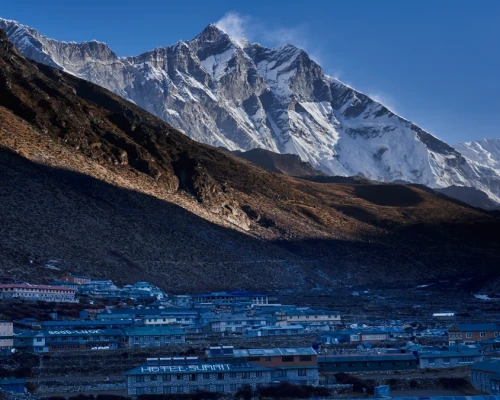
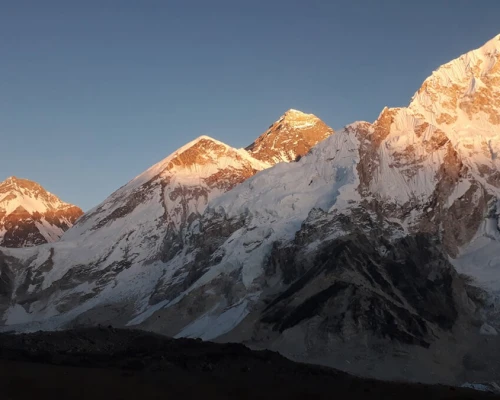
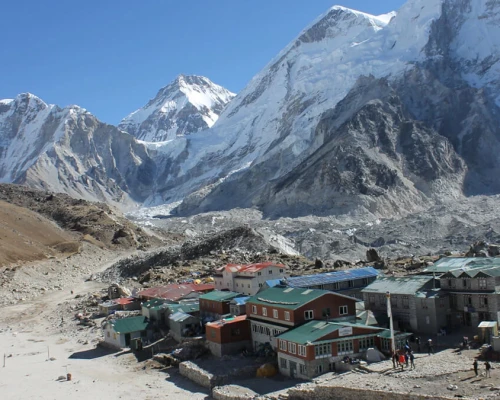
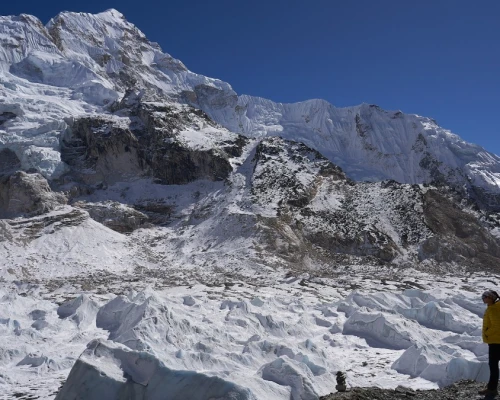
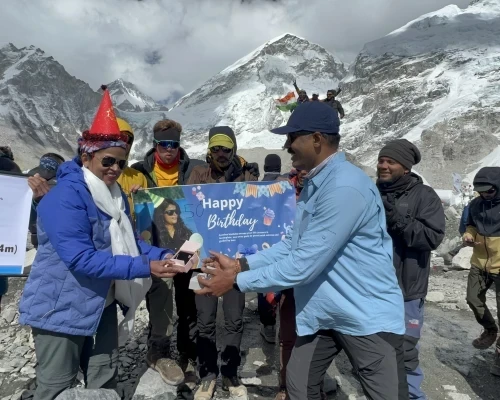
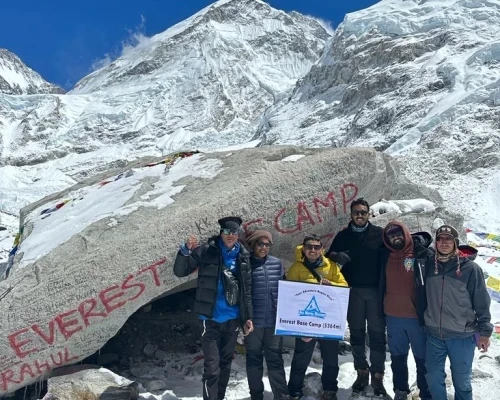
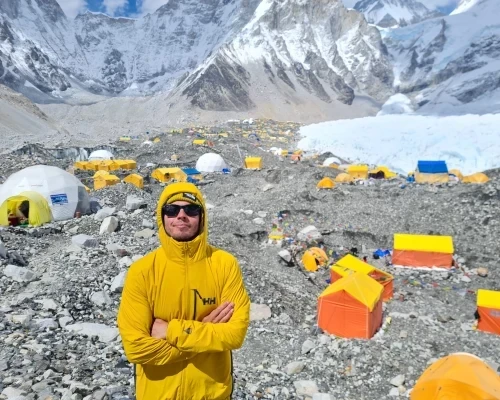
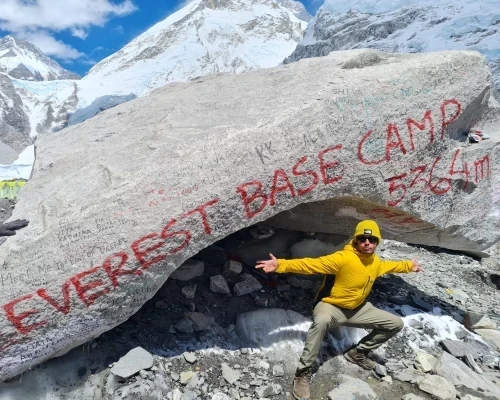

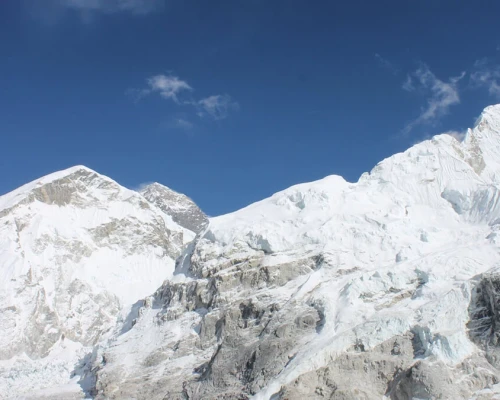
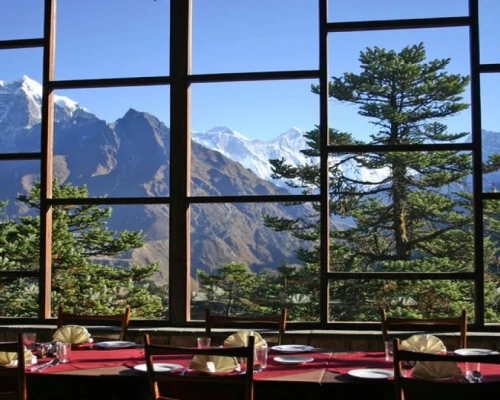






 based on 1 review
based on 1 review
